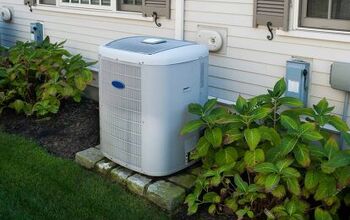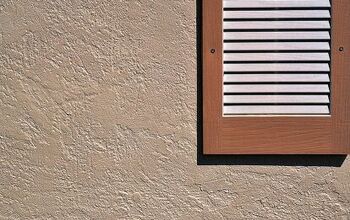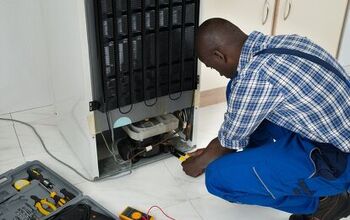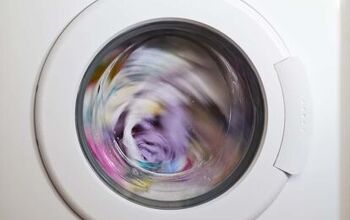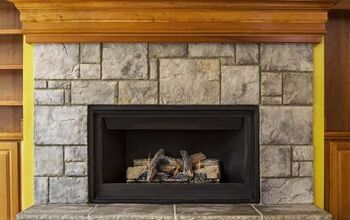How Long Does It Take For Pipes To Freeze?

Cold weather can be a nuisance for any homeowner between expensive heating bills and snow. Freezing temperatures can cause your pipes to freeze, and that can lead to thousands of dollars worth of damage in some cases. So, how long does it take for pipes to freeze?
It takes 6 hours for pipes to freeze if the outside temperature stays below 20 degrees Fahrenheit. Pipes can freeze in as little as 3 hours or less in sub-zero temperatures. Exterior pipes or uninsulated interior pipes can freeze at 32 degrees Fahrenheit if the temperature stays consistent for half of the day.
Luckily, you can prevent pipes from freezing if you run the faucet and improve your insulation. Frozen pipes can release sewer odors into the house, prevent you from getting water, and can burst. Follow along as we take a look at how long it takes for pipes to freeze.
Do You Need to Hire a Plumber?
Get free, zero-commitment quotes from pro contractors near you.

Why Do Pipes Freeze?
The main cause of pipes freezing is drastic drops in temperature. For water pipes, they typically don’t freeze immediately at the standard 32 degrees Fahrenheit freezing point. They can freeze at that temperature, however, but that is usually if there are leaks in the pipes.
But if the weather stays at 32 degrees Fahrenheit or below for 6 to 8 hours or longer, your pipes can freeze. Indoor pipes won’t likely freeze unless outdoor temperatures reach 20 degrees Fahrenheit or below.
Instead, pipes generally freeze after 6 hours of 20 degree Fahrenheit temperatures or below. Another common cause of frozen pipes is a lack of insulation. When pipes are not properly insulated, they are left exposed to the elements, thus freezing more quickly in cold temperatures.
Finally, the other common cause of frozen pipes, believe it or not, is the air conditioner. However, air conditioner causing frozen pipes ties directly into the outdoor temperature. If there is cold weather outside, and you leave your AC on at 60 degrees Fahrenheit or below, your pipes could freeze.
How to Tell if Pipes Are Frozen
You can tell that your pipes are frozen if limited water comes out or nothing comes out at all. Inspect the pipe and look for a bulge that can indicate that there is ice lodged within it. Frozen pipes generally drip water because the ice within them can create condensation.
You can also notice small hairline cracks in the pipes if they are frozen because the ice creates pressure. Pipes can gurgle if there is ice within them as water tries to pass through. Sewer odors can escape a faucet if your pipes are frozen because water cannot reach the trap and it will dry out.
What Happens When Pipes Freeze?
Pipes can burst when they freeze, and it can lead to water damage and expensive repairs. The rush of water and moisture can lead to mold and mildew in the air where the pipe burst. Homeowners commonly need to replace the drywall after a pipe bursts because the water damage can ruin it.
A burst pipe can waste up to 50 gallons of water per minute, and that is enough to damage your walls and floors. You need to shut off your water right away if the pipe bursts. Not all frozen pipes can burst, but they can easily burst if the ice water expands up to 9%.
You must repair a pipe after it bursts, and it costs an average of $600. However, homeowners can spend up to $1,000 or more on extensive pipe damage. It is necessary to repair burst pipes immediately so that your plumbing can function properly and you can reduce the risk of mold.
Prevent Pipes From Freezing
It is expensive to fix burst pipes, so you should do everything that you can so that they don’t freeze. Whether you run the faucet or heat the pipes, you can prevent your pipes from freezing in 6 simple ways. Let’s take a look at how you can keep your pipes from freezing without spending a fortune.
1. Run Faucet
The easiest way to prevent your pipes from freezing is to simply run the faucet. It is ideal to run at least one faucet continually when temperatures drop to 20 degrees Fahrenheit or lower. You don’t need to run the faucet to its fullest, and a trickle is often enough.
Let the water trickle to help warm up the inside of the pipes. Water can freeze more easily if it sits stagnant for several hours, and you can prevent that if you run your faucet. You may need to run 2 or more faucets at a trickle if you have a large house with multiple plumbing fixtures.
2. Disconnect Hoses
It is important to disconnect all hoses at the start of winter if you live in a cold climate to prevent frozen pipes. Pipes can freeze overnight if your hose is connected and the temperatures drop to 32 degrees Fahrenheit or below. Hoses can cause pipes to freeze at higher temperatures because they are outside and often contain residual water.
Remember to disconnect your hose before the sun goes down if the temperature is going to drop overnight. It is common for a homeowner to wake up to frozen pipes because it is easy to forget to disconnect a hose if the temperatures are above freezing during the day.
3. Fix Leaks
Pipes can easily freeze if there are cracks or leaks, and you need to fix them before temperatures drop below freezing. Leaks allow cold air to enter the pipe and freeze the water quicker than it would have. The water that leaks from the pipe can quickly freeze and cause it to spread throughout the pipe.
The expansion of the ice in the pipe can cause it to burst, and that’s more expensive to fix than a leak. It costs an average of $250 to fix a leak in a pipe, but it can cost much less to patch a minor leak.
4. Close the Garage Door
Cold air can enter your home through the garage and it can cause your pipes to freeze. Water pipes within the walls near your garage can easily freeze, especially if your garage door is open. Close your garage door to prevent too much cold air from coming in so that your pipes don’t freeze.
5. Improve Insulation
Pipes are more likely to freeze if your walls are poorly insulated. Uninsulated pipes are more sensitive to the outside temperature, and they can freeze quickly if the temperature drops below freezing. Low temperatures can cause pipes to freeze in 2 ½ hours or less if you have poor insulation.
Good insulation can help retain warmth during the winter to make your home more comfortable and protect the pipes. It costs an average of $550 to insulate pipes, and it costs between $100 and $1,000 depending on how much insulation you need to replace.
6. Use a Hair Dryer
You can prevent your pipes from freezing if you directly heat the pipes with a hair dryer. Hair dryers generate enough heat so that the water within the pipes doesn’t freeze and expand. This is especially useful if your home or pipes are poorly insulated.
Run your faucets and use a hair dryer in conjunction to be extra cautious and prevent freezing. A hair dryer isn’t enough in extreme cases, but the heat can prevent freezing and even thaw frozen pipes if you have no other options. Focus on pipes that are closest to windows, exterior walls, and your garage because they are most likely to freeze.
How To Fix Pipes That Freeze
There may be occasions where all of your techniques don’t prevent the pipes from freezing. If you’re not someone who is experienced in the DIY world, you may want to pass this project onto a professional. if you decided that you want to do this project yourself then we’ve included some tips below to unfreeze your pipes.
Tips To Unfreeze Pipes
- Stay informed. Of course, you won’t want to use a blow torch on the pipe (Yes, people do that) or use a kerosene or propane heater or any other type of open flame to thaw out your frozen pipes. While you may think it’s a good idea to set an electric space heater in the area, it’s not safe to do so.
- Keep your faucet open. During the process of thawing, there will be steam that needs to be released from your pipes. By leaving your faucet open, you allow the after to keep moving through the pipe and discharge the run off from the thawing. this will help speed up the process to allow your pipes to get back into working order.
- Apply heat. To apply heat, you can wrap the pipes with an electric heating pad to heat the area. Or you can use a high powered blowdryer as well, whatever method you prefer. If you don’t have an electric heating pad or a decent blow dryer then you can use some towels that you soak in hot water to help. However, keep in mind that this fix is only temporary and that you should not leave the heating pad unattended just in case of a fire. When the pipe has thawed then you will need to turn on the faucets in your home to make sure there are no more frozen pipes.
- Act quickly. The sooner you act on a broken pipe, the better chance you will have of no complications.
Summing It Up
With good insulation, pipes take 6 hours to freeze in 20 degrees Fahrenheit temperatures or below. If you do not have proper insulation, however, it could take 2-3 hours at the same temperature for your pipes to freeze.
In cold weather, disconnect the hoses, run the faucet, and close your garage door to mitigate the chance of freezing pipes. Otherwise, try to inspect your pipes for leaks throughout the year to stay on top of it before winter.
If you can’t un-freeze your pipes on your own, enlist the help of a plumber to avoid burst pipes.
Related Questions
How long until frozen pipes burst?
It takes an average of 4 ½ hours for frozen pipes to burst. Frozen pipes can burst in 3 hours or less in some cases if the pipes are thin or uninsulated. The water in a pipe can expand by up to 9% when it freezes, and the extra pressure can cause it to burst in 5 hours or less.
Are frozen pipes an emergency?
Treat frozen pipes as an emergency because they can burst and cause extensive damage. You can generally reach a plumber at all hours of the day in the event of an emergency when your pipes freeze. Run your faucets and attempt to heat the pipes with a hairdryer if possible until a plumber can help you.

Nick Durante is a professional writer with a primary focus on home improvement. When he is not writing about home improvement or taking on projects around the house, he likes to read and create art. He is always looking towards the newest trends in home improvement.
More by Nick Durante

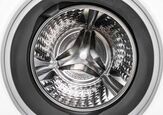

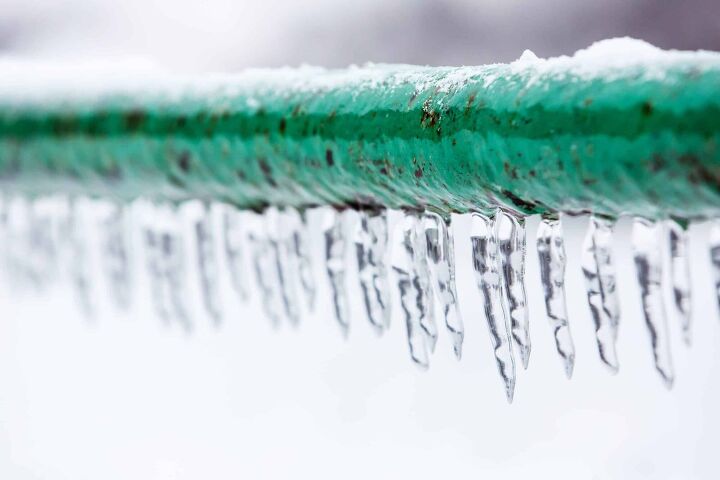






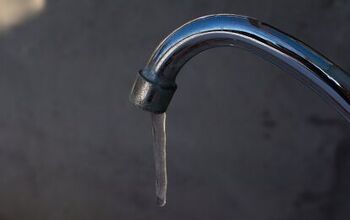
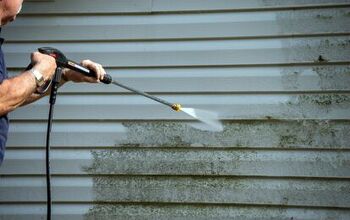

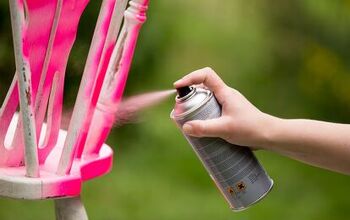
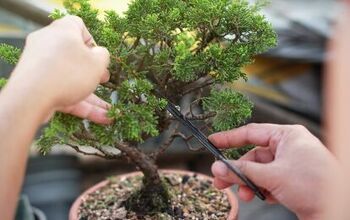


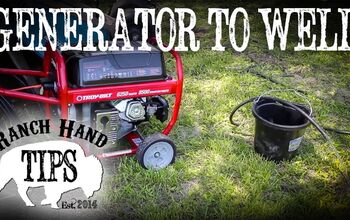
![How To Reset A Whirlpool Cabrio Washer [In 5 Easy Steps!]](https://cdn-fastly.upgradedhome.com/media/2023/07/31/9076531/how-to-reset-a-whirlpool-cabrio-washer-in-5-easy-steps.jpg?size=350x220)
